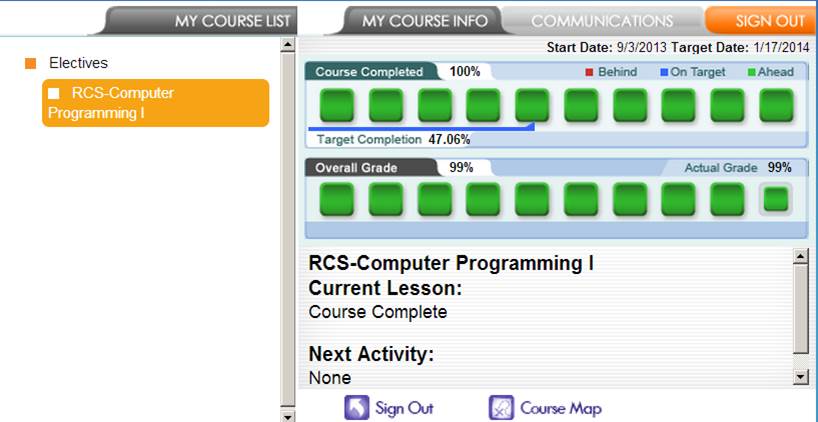Gamification introduced as revolutionary educational tactic
An example of an online class, one of the major components of “gamified” education.
For some, education can be a dull, repetitive slog – day in and day out. Teachers often find it hard to engage and instill a love of learning in their students. A new movement to improve educational practices is on the rise, and it is called gamification.
Gamification, in general, refers to a method of transferring the fun and immersive aspects of game design into various fields –in this case, education. It is a way of motivating people to do better and develop skills while enjoying themselves.
Moreover, gamification aims to make ordinary tasks more engaging to make people work more willingly and efficiently. Most people assume, given the name and overall concept of gamification, that it would involve video games in some way. That assumption, however, is incorrect, for games do not have to be involved with gamification in any way for the concept to be successful
Popular aspects of game design associated with gamification include offering a sense of progression, encouraging camaraderie/ friendly competition, trial-and-error, and the application of benefits. These aspects are most frequently illustrated through the usage of progress bars (much like those found on Career Cruising), leaderboards, and other similar objects.
There are a plethora of approaches to gamification, each one unique in its own way. One example starts off with viewing points and grades in a different way. In a normal class, students start out with an A and their grade will either shift downward or stay where it is. Obviously, students may feel demoralized as they watch their grades perhaps decline. This is where gamification begins to help.
In a “gamified” class, students start out with no points, and no grade. Over time, as they complete assignments, they will attain points and their grades will rise more visibly. The way in which grades are assigned is not changed, but the perception of them is. Students are generally more encouraged to see how far they have come than to see how far they have fallen.
Continuing with the gamification concepts, rewards and other incentives can be given out to students who reach a certain grade. In order to increase camaraderie, points can be given to students who help out others, or to students who contribute to class discussion. Another method of boosting student camaraderie would be to have a communal pool of points, and when a certain amount is reached, the class earns various incentives. This method allows for the class to work together to insure everyone learns enough to succeed. These methods only scratch the surface of potential gamification strategies.
Of course, there are downsides to gamification. There is a chance that students can misconstrue the importance of learning with simply gaining incentives, and thus only do things if incentives are involved.
If gamification is implemented poorly or incompletely, it could come across as forced and uninteresting. Students who do not care much for academics in the first place are not guaranteed to suddenly develop an appreciation for education, and a variety of other problems could very well arise.
These issues, however, are not unsolvable. Gamification is still a rather new concept, and over time it will become more efficient at dealing with roadblocks such as those mentioned above. Gamification might not be the ultimate solution for all educational woes, but it is certainly a step in the right direction.





